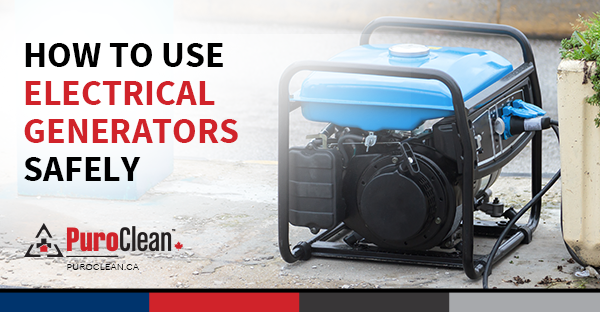The PuroClean Blog
How to Use Electrical Generators Safely
 Portable electrical generators can power up essential equipment and appliances during a power blackout. Although very useful in these situations, electrical generators should be operated with caution due to the risk of fire and carbon monoxide (CO) poisoning. Here are a number of important tips for using generators safely:
Portable electrical generators can power up essential equipment and appliances during a power blackout. Although very useful in these situations, electrical generators should be operated with caution due to the risk of fire and carbon monoxide (CO) poisoning. Here are a number of important tips for using generators safely:
- Generators should never be used indoors (i.e. garage, carport, basement or crawlspace) to prevent CO poisoning. WARNING: opening up windows or doors is not enough to prevent CO buildup in an enclosed space.
- Battery-operated CO alarms should be installed in properties for extra protection against CO poisoning. CO can’t be seen or smelled, but a CO alarm can detect it.
- Generators should be placed outside, in a well-ventilated place, and away from doors, windows and vents that could allow CO to come indoors.
- Generators must be kept dry to avoid electrical shocks. Operating generators must never be touched with wet hands.
- Generators have to be kept on a dry surface and under a structure, such as a tarp held up on poles, to protect them from rain or snow.
- Appliances should be plugged directly into the generator or into an outdoor-rated extension cord connected to the generator. The cord must be checked for cuts or tears and the plug should have all three prongs.
- The manufacturer’s rating for the total electric load supported by the generator must not be exceeded.
- Before refueling, generators should be turned off and allowed to cool down to avoid any risk of fire.
- Only the type of fuel specified on the generator’s instructions must be used. Fuel should be stored in a container that is intended to be used for this purpose.
- The fuel container has to be kept in a protected area, outside of living spaces, and as far apart from appliances that produce heat as possible.
More facts about carbon monoxide can be accessed in this article. The PuroClean team stands ready to provide professional restoration services to any property affected by fire, water or mould damage.
Follow us on Twitter, Facebook, Google+ and LinkedIn to get our notifications!
February 18, 2016



